The current situation in Afghanistan has led to the effective closure of the OAKX/Kabul FIR to overflights, which means that some traffic routing between Europe, India and the Far East may now need to plan routes which cross the northern Pakistan/India border.
This post will take a look at the additional operational threats and info to be considered here, particularly due to the ongoing dispute over the Kashmir region, and the airspace warnings in place for Pakistan because of this.
The conflict in brief.
This conflict is rooted in who controls the region, with both India and Pakistan laying territorial claim to it. In fact, this conflict has been ongoing since 1947 and shows no signs of resolving in the near future.
Currently India control around 55% of the area, Pakistan approximately 35% and China have a third party hand in the remaining 20%.
There is also a secondary focus on the region from both sides due to cross-border terrorism and security and safety issues. Pakistan’s border with Afghanistan on the other side poses a similar threat.

The India Pakistan border is fenced with around 750km of foodlit fencing, and is still being expanded
The route structure of the region.
Aircraft routing from Europe and across to India and beyond have historically had 3 general routing options available to them:
- Via Saudi Arabia and then east direct to India. This avoids Pakistani airspace, or crosses just the most southerly portion of the airspace;
- Via Turkey and down through Iraq/Iran and then east via southern Pakistani airspace and into India;
- Across Eastern Europe via Azerbaijan, Turkmenistan and then south east crossing Afghanistan’s central airspace, avoiding the northerly Kashmir region.
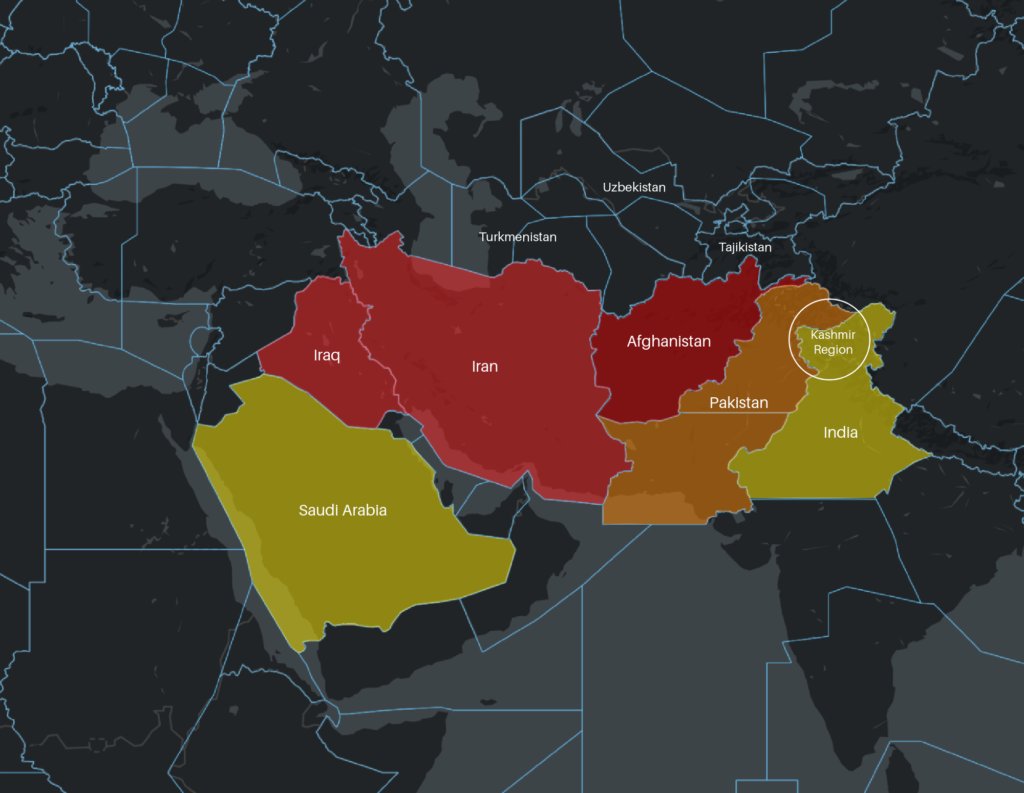
That third routing option which utilised Afghanistan’s airspace, bypassed Saudi Arabia, Iran and Iraq – all of which have airspace safety considerations. Overflights across Iran and Iraq, for instance, are prohibited to US operators.
While Afghanistan also had airspace safety risks associated with it, these were previously generally low level and not “all altitude” concerns. That has recently changed with the Taliban takeover of Afghanistan. However, though the US and several other countries have since issued airspace bans and warnings for Afghanistan, overflights are still generally allowed on airways P500 and G500 which run along the eastern boundary of the Kabul FIR.
Aircraft now needing to re-route to avoid Afghanistan’s uncontrolled OAKB/Kabul FIR, and who do not wish, or are unable to utilise Saudi, Iran or Iraq airspace, may now be limited to this more northerly routing – via the G500/P500 airway in eastern Afghanistan, the northern portion of Pakistan and into India, potentially through the Kashmir region.
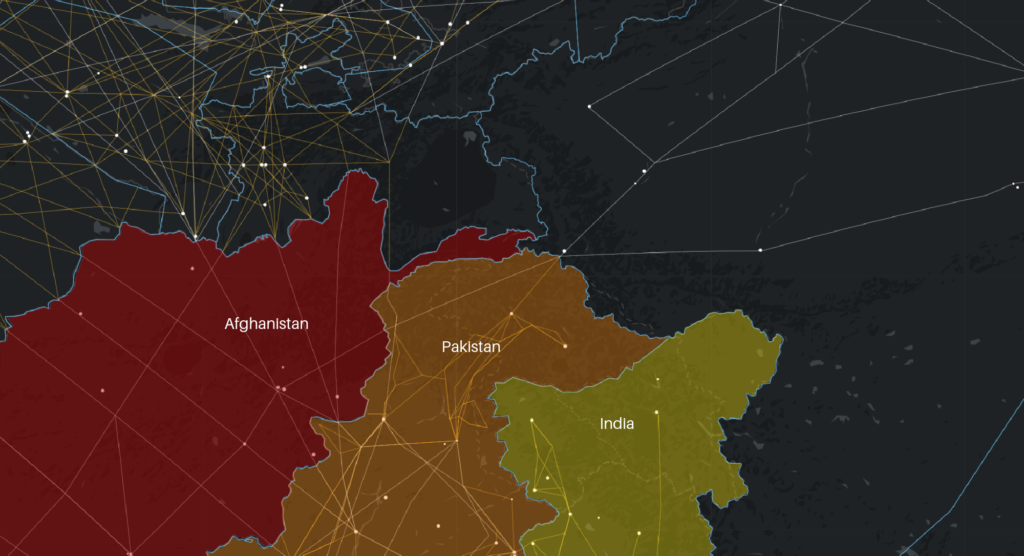
Airways are limited in the area, with no easy transfer between Pakistani and Indian ATC control.
What is the risk in this region?
Several countries have long-standing airspace warnings for Pakistan which advise against overflights below FL260, due the risk posed by small-arms fire and indirect weapons fire. There is also a potential anti-aircraft fire risk, and there have been previous attacks against airports.
What is the current situation?
An escalation in activity across the border has been seen of late, with the number of drone attacks and activity across the line of control increasing, including several attacks against Indian Air Bases since 2019.
India possess strong air defense systems and an active air force. Historically, they have employed both fighter jets and conventional SAM systems to mitigate attacks. With the increase in both drone size and capability, and the escalation in number of attacks, there is a risk they will resort to SAM systems and fighter jets once again. If this happens, this will lead to a higher risk at all altitudes for aircraft mis-identification.
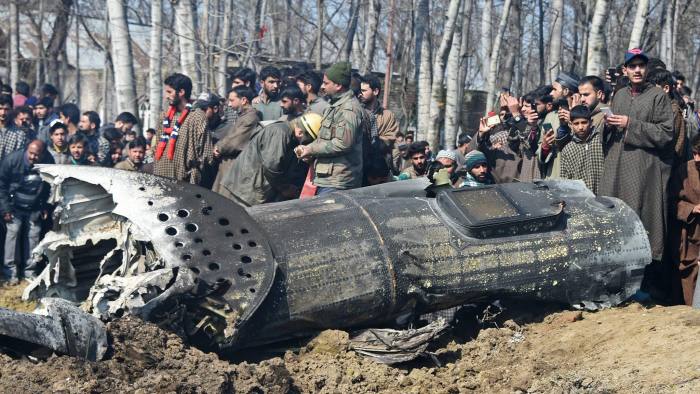
A helicopter was shot down in the Srinagar region in 2019
General considerations for operating over or into Pakistan.
Operators to OPIS/Islamabad have been reporting an increase in security measures and crew procedures. Crew can expect more stringent security and ID checks. Pakistan are actively guarding against terror threats at the airport and passengers may experience stricter security and ID controls as well.
Pakistan is an ADIZ and requires crew to check-in prior to entry. Comms handover between India and Pakistan can also be difficult so an advance confirmation of next frequencies is advisable when routing across any part of the border.
There traffic levels in Pakistan’s airspace have also increased recently, and crew should be aware of potential separation and traffic conflict concerns.
Pakistan airspace closures.
Pakistan have previously closed sections of their airspace. In Feb 2019, conflict between India and Pakistan resulted in Pakistan closing its airspace to overflights. The conflict was a result of escalating clashes between the two countries in the disputed Kashmir region, with numerous airstrikes on both sides. The airspace slowly reopened, and only became fully open again in August 2019.
Diversion options.
Both India and Pakistan allow tech stops (up to 24 hours) and are accommodating of diverting and emergency aircraft, however, avoiding Indian Military Air Bases (unless a dire emergency) will save you a fair amount of extra security checks, paperwork and grief on the ground.
OPIS/Islamabad is a major Pakistani international airport close to the border, and is used as a southerly Himalayan diversion airport. It offers two well equipped CAT II/III runways of 12,001′.
OPST/Sialkot has a single runway, 11,811′, with an ILS and an RNP approach available.
VISR/Srinagar on the Indian side has s single 12,090′ runway.
VIAR/Amritsar also offers a single CAT II/III equipped 12,001′ runway.
There are also several other smaller airports which serve domestic routes.
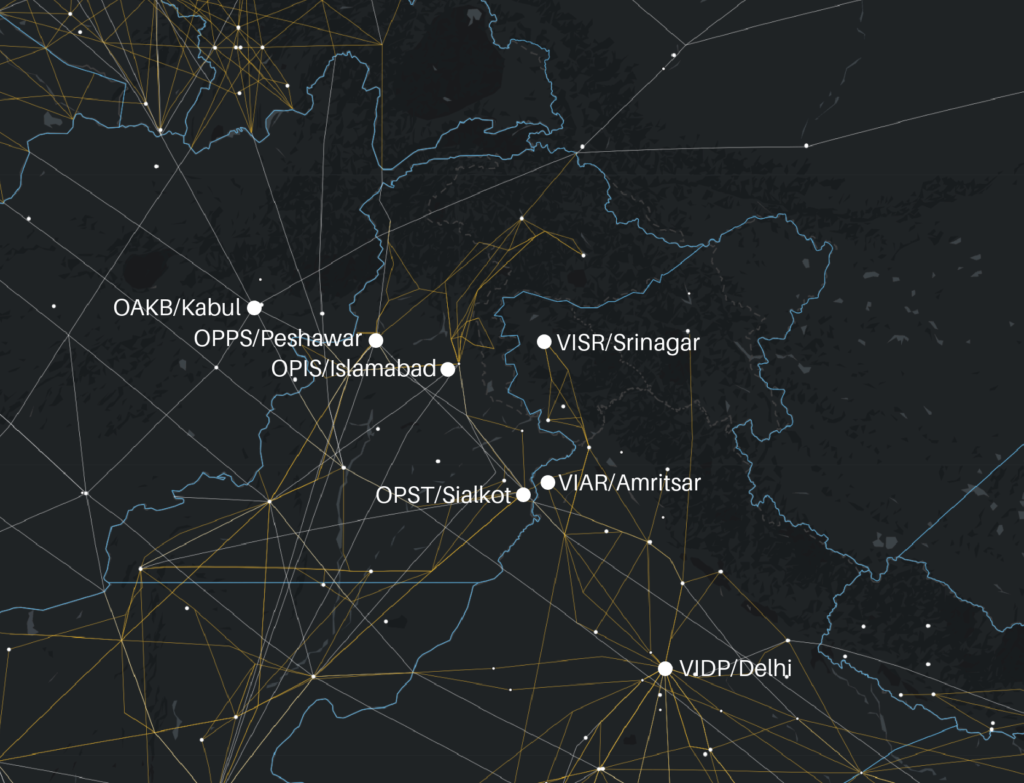
The main airports in the region.
Permits and overflights
Both India and Pakistan require overflight and landing permits.
For India, the lead in time for overflights is 3 days, while for landing it is 7 days. All permit applications are sent to the Ministry of Civil Aviation (MOCA) and then pass through several other government departments for security checks. You need your PPR overflight number available before reaching Indian airspace and they do often ask for it so have it handy.
India have fairly strict slot policies at several of their airports. During peak times they also might change your slot at short notice, or give you lengthy delays (2 hours+).
We recommend the use of an agent to assist with the permit process:
Freedom Air +91 11 2981 3311 / ops@freedomair.aero / freedomair@airtelmail.in
The CAA of India contact info is +91 11 2462 0784 / +91 11 2462 9221 / dgoffice.dgca@nic.in / irsec.dgca@nic.in
For Pakistan, overflight and landing permits are issued through the Pakistan CAA. These take around 96 hours for overflight and 6 days for landing.
An agent can also assist with the process:
Aircraft Aviation Services (ACAS) +92 213 468 0109 / ops@acas.com.pk / ops1@acas.com.pk
CAA of Pakistan contact info – +91 21 997 1111 extn: 2288/2289 / +91 21 9924 2004 / support@caapakistan.com.pk / AFTN: OPHQYAYX
In summary
With the exception of US operators, flights between Europe and India/the Far East generally opt for routings via Saudi Arabia, Iran or Iraq. While routings via Tajikistan are possible, the lack of coordination between Pakistani and Indian ATC, and with few established airways, presents a planning and potential safety risk.
Pakistan has airspace safety concerns, particularly in the northern airspace (OPLR/Lahore FIR). With the closure of Afghan airspace, flights routing from Europe to Pakistan may benefit from routing via Tajikistan. However, most international flights continue to use the southerly routing for overflights.
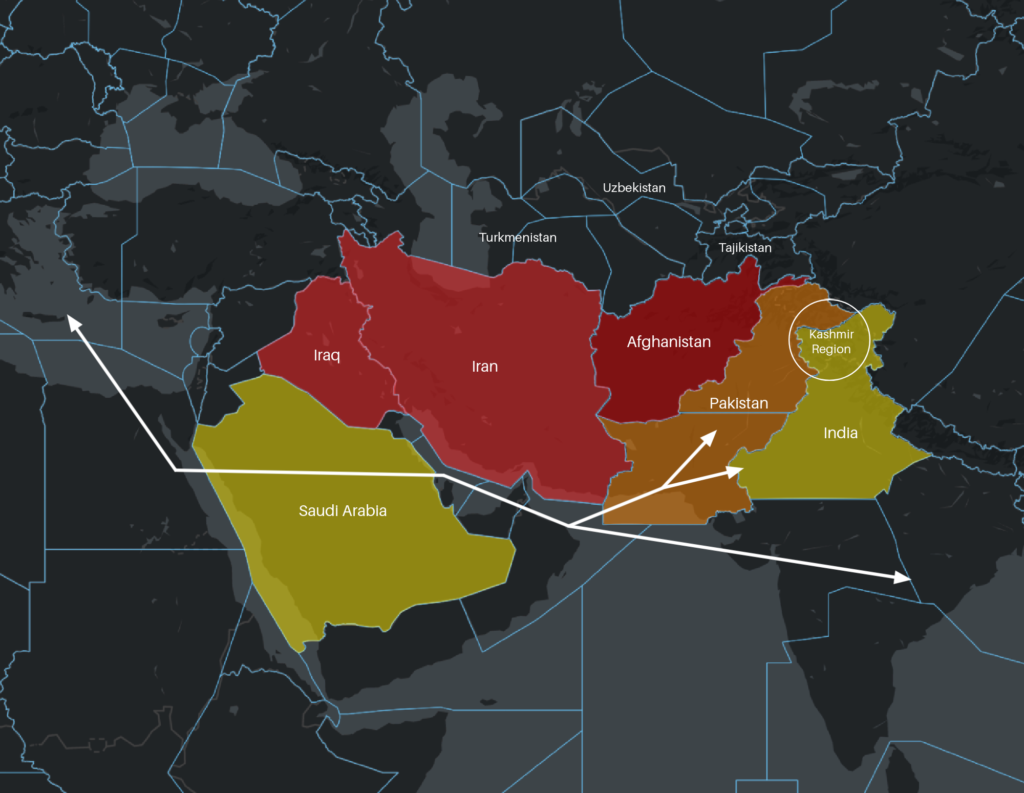
Most Europe-Asia flights continue to route south via Saudi, UAE, Oman.
Further Information
Information on Pakistan airspace can be found on the Pakistan CAA website.
If any operators or crew have experience of overflying this region please send us any insights you have on it so we can share the information team@ops.group.
More on the topic:
- More: July 2024: Afghanistan Overflight Update
- More: Aug 2023: Who wants to overfly Afghanistan?
- More: Afghanistan Update – September 2021
- More: Afghanistan: Do Not Fly
- More: FAA issues Emergency Order for Afghanistan (Updated)
More reading:
- Latest: Teterboro: RIP the RUUDY SIX
- Latest: 400% increase in GPS Spoofing; Workgroup established
- Latest: GPS Spoofing WorkGroup 2024
- Safe Airspace: Risk Database
- Weekly Ops Bulletin: Subscribe
- Membership plans: Why join OPSGROUP?



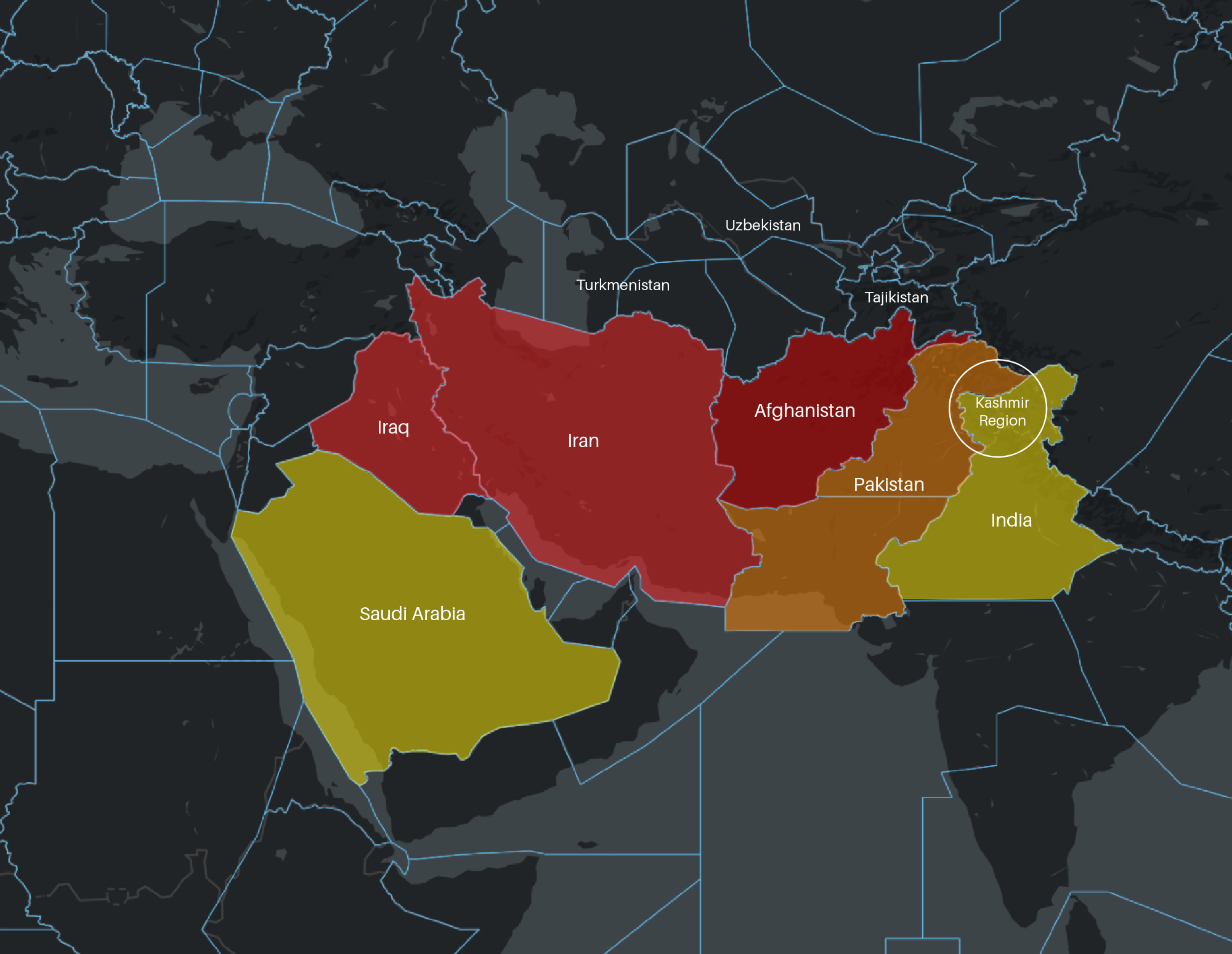
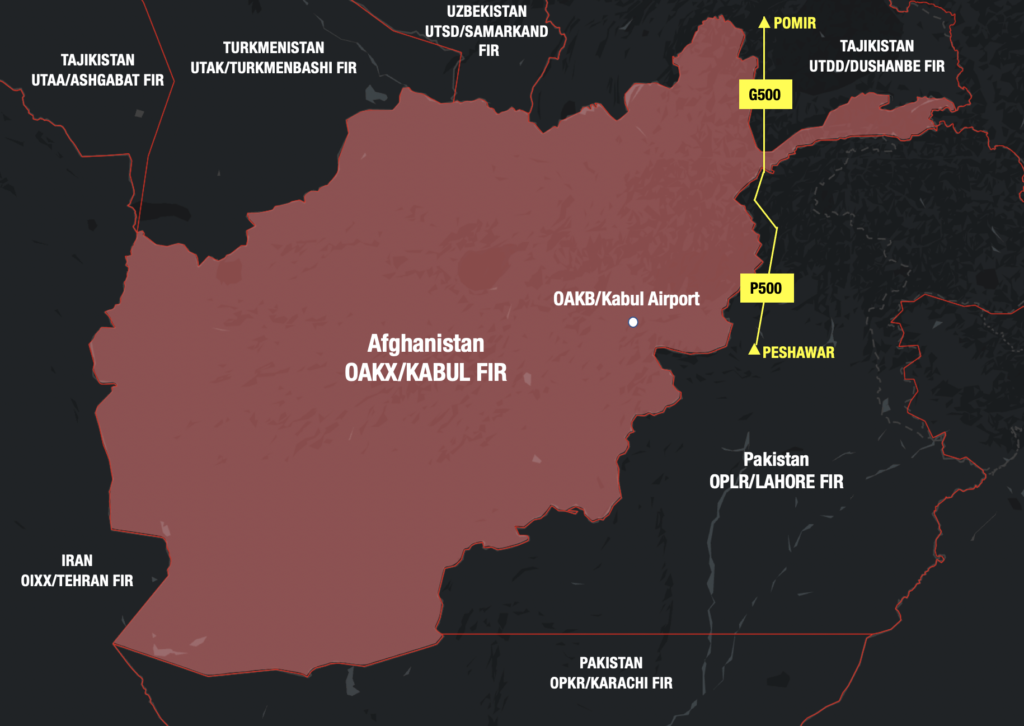







 Get the famous weekly
Get the famous weekly 





